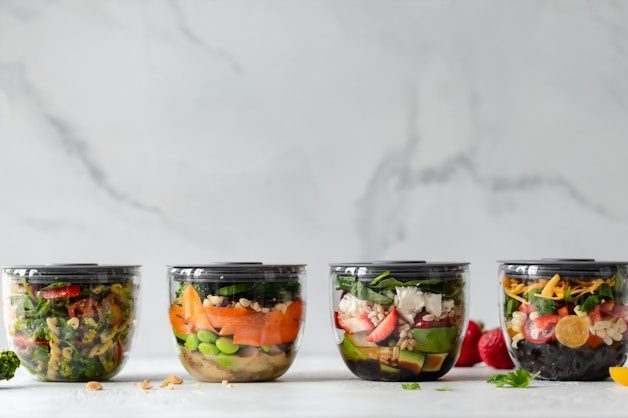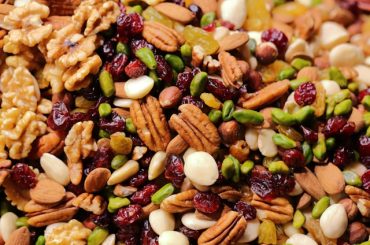Before we dive deep into the SWOT analysis, let’s get the business overview of Blue Apron. Blue Apron is an American company that provides:
- A meal kit service.
- Offering pre-portioned ingredients and recipes to subscribers.
- Enabling them to prepare home-cooked meals.
Founded in 2012 by Matt Salzberg, Ilia Papas, and Matt Wadiak, the company quickly gained popularity by tapping into the growing interest in cooking at home, convenient meal solutions, and an appreciation for fresh, high-quality ingredients.
Core Business Model:
- Meal Kit Delivery: Customers subscribe to weekly boxes containing ingredients and recipes for various meals. This service caters to different dietary preferences and offers flexibility in the number of meals and servings.
- Direct-to-Consumer: Blue Apron operates on a direct-to-consumer model, managing the entire process from recipe development to ingredient sourcing, packaging, and delivery.
Product Offerings:
- Diverse Menu Options: The company offers a range of menus, including meat, fish, vegetarian, and health-conscious options, providing variety and catering to different dietary needs.
- Wine Pairing: In addition to meal kits, Blue Apron also offers a wine subscription service, providing wines that complement its meals, complete with tasting notes and pairing tips.
Market Presence:
- Online Platform: Blue Apron’s service is primarily offered through its website and mobile app, where customers can manage their subscriptions, select their meals, and access cooking tips and recipes.
- U.S. Focus: While the company has explored expansion opportunities, its primary market remains the United States.
Strategic Moves:
- Product and Service Innovations: To differentiate itself and retain customers, Blue Apron has introduced various product innovations, such as collaborations with celebrity chefs, limited-time recipes, and meal kits focused on health and wellness trends.
- Partnerships and Collaborations: Strategic partnerships, such as those with Weight Watchers (WW) and various celebrity chefs, aim to expand its customer base and enhance its product offerings.
- Net revenue declined 3% year-over-year to $458.5 million from $470.4 million in 2021, primarily due to declines in Customers and Orders due, in part, to macroeconomic pressures on consumer spending due to the inflationary environment, but partially offset by an increase in Average Order Value due to pricing increases and advances in product innovation and variety.
- Net loss was $109.7 million, and diluted loss per share was $3.02, based on 36.3 million weighted-average common shares outstanding, compared with a net loss of $88.4 million and diluted loss per share of $3.97, based on 22.3 million weighted-average shares outstanding for the full year 2021.
Here is the SWOT analysis for Blue Apron
A SWOT analysis is a strategic planning tool used to evaluate the Strengths, Weaknesses, Opportunities, and Threats of a business, project, or individual. It involves identifying the internal and external factors that can affect a venture’s success or failure and analyzing them to develop a strategic plan. In this article, we do a SWOT Analysis of Blue Apron.
SWOT Analysis: Meaning, Importance, and Examples
Strengths
- Convenience: Blue Apron offers a convenient solution for busy individuals or families looking to cook at home without the hassle of meal planning and grocery shopping, saving time and reducing food waste with pre-portioned ingredients.
- Quality Ingredients: The company emphasizes high-quality, often sustainably sourced ingredients, including organic produce, antibiotic-free meats, and seafood certified by the Monterey Bay Aquarium Seafood Watch program, appealing to health-conscious and environmentally aware consumers.
- Culinary Experience: Blue Apron’s diverse menu options and detailed recipes enable customers to explore new cuisines and cooking techniques, enhancing their culinary skills and experience.
- Subscription Model: The subscription-based business model ensures a steady revenue stream and customer retention, allowing for better inventory management and reduced waste through precise ingredient ordering based on subscriber numbers.
- Brand Recognition: As one of the pioneers in the meal kit delivery market, Blue Apron enjoys strong brand recognition and loyalty among early adopters and food enthusiasts.
- Customization and Flexibility: Blue Apron offers a range of meal plans and the ability to customize orders based on dietary preferences, catering to various customer needs and preferences.
- Direct-to-Consumer Model: By operating on a direct-to-consumer model, Blue Apron can maintain a closer relationship with its customers, continuously gathering valuable feedback and data to improve its service and offerings.
- Digital Integration: Blue Apron’s online platform and mobile app enhance user experience through easy subscription management, recipe access, and customer service, integrating technology into the culinary experience.
Weaknesses
- High Customer Acquisition Costs: The meal kit delivery market is highly competitive, leading to significant marketing expenses for Blue Apron to acquire new customers and stand out.
- Customer Retention Challenges: Maintaining long-term subscribers can be problematic in the subscription-based meal kit industry, where customers may quickly churn due to various reasons, such as perceived high cost, dissatisfaction with meal variety, or the desire for more flexibility.
- Operational Complexities: The logistics of delivering fresh, perishable ingredients across the country involve complex supply chain and inventory management challenges, affecting product quality and delivery reliability.
- Narrow Profit Margins: The costs associated with sourcing quality ingredients, packaging, and nationwide shipping, combined with competitive pricing pressures, result in narrow profit margins for Blue Apron.
- Dependence on a Single Revenue Stream: Blue Apron primarily relies on its meal kit subscription service for revenue. This lack of diversification can be risky if the meal kit market’s growth slows or consumer preferences shift.
- Impact of Negative Reviews: As with any service-based business, negative customer experiences and reviews, particularly regarding food quality or delivery issues, can quickly spread and damage the brand’s reputation.
- Market Saturation: The meal kit delivery market has become increasingly saturated with numerous competitors, including those with niche offerings, making it harder for Blue Apron to differentiate itself and grow its market share.
- Environmental Concerns: Although meal kits can reduce food waste, the packaging waste associated with individual ingredient portions can concern environmentally conscious consumers, potentially deterring some customers.
Opportunities
- Expanding Meal Options: Introducing a wider variety of meal options, including ethnic cuisines, seasonal specialties, and limited-time offerings, can attract a broader audience and cater to diverse culinary tastes.
- Health and Dietary Trends: Capitalizing on health and wellness trends by offering specialized meal plans such as keto, paleo, vegan, or gluten-free options can appeal to health-conscious consumers and those with specific dietary needs.
- Partnerships and Collaborations: Partnerships with celebrity chefs, popular food brands, or fitness and wellness influencers can enhance Blue Apron’s menu offerings and market reach, providing a competitive edge.
- Retail Expansion: Expanding into retail by offering meal kits in grocery stores or through other physical retail channels can increase brand visibility and accessibility, reaching consumers who prefer shopping in-store over online subscriptions.
- Technology Integration: Leveraging technology to enhance customer experience through personalized meal recommendations based on dietary preferences and past orders or integrating with smart kitchen devices can improve service and customer satisfaction.
- Sustainability Initiatives: Strengthening sustainability efforts, such as reducing packaging waste, sourcing ingredients more sustainably, and improving supply chain efficiency, can resonate with environmentally conscious consumers and differentiate Blue Apron.
- Geographic Expansion: Expanding service to new geographic areas, both within the United States and internationally, can open up new markets and customer segments.
- Meal Preparation Convenience: Innovating in meal preparation convenience, such as offering more ready-to-eat options or quicker-to-prepare meals, can appeal to extremely time-constrained consumers.
- Corporate and Group Offerings: Developing meal kit programs tailored for corporate wellness programs, team-building activities, or group events can open new revenue streams and increase bulk orders.
- Community and Content Building: Enhancing community engagement through cooking classes, online forums, and recipe-sharing platforms can foster a sense of community among subscribers, increasing brand loyalty and customer retention.
Threats
- Intense Competition: The meal kit delivery sector is highly competitive, with numerous players, from startups to established food and retail companies, entering the space. This competition can lead to price wars, increased customer acquisition costs, and challenges retaining market share.
- Changing Consumer Preferences: Consumer preferences are constantly evolving, with growing demand for greater variety, flexibility, and even faster convenience options like ready-to-eat meals. Keeping up with these trends while maintaining quality and cost-effectiveness can be challenging.
- Economic Downturns: Economic recessions or downturns can lead consumers to cut discretionary spending, such as on meal kit subscriptions, which are often perceived as a luxury compared to traditional grocery shopping.
- Supply Chain Vulnerabilities: The reliance on a complex supply chain to deliver fresh ingredients exposes Blue Apron to risks such as supply disruptions, increased costs due to raw material price volatility, and quality control issues, affecting customer satisfaction and operational efficiency.
- Grocery and Restaurant Delivery Services: The rise of online grocery shopping and restaurant delivery services, especially platforms like Instacart, Uber Eats, and DoorDash, provide direct competition, offering consumers alternative convenient ways to access meals without the need for cooking.
- Regulatory and Safety Concerns: Food safety regulations and the potential for product recalls can pose significant risks. Any safety issue or regulatory non-compliance can lead to customer distrust and significant financial and reputational damage.
- Environmental and Sustainability Pressures: There is growing scrutiny on the environmental impact of packaging waste and the carbon footprint associated with delivering meal kits. Companies in this space are under pressure to adopt more sustainable practices, which can involve additional costs and operational challenges.
- Technological Disruptions: Advances in food technology, such as the rise of food apps, smart kitchens, and even 3D food printing, could disrupt traditional meal kit models, requiring companies like Blue Apron to innovate continually to stay relevant.









